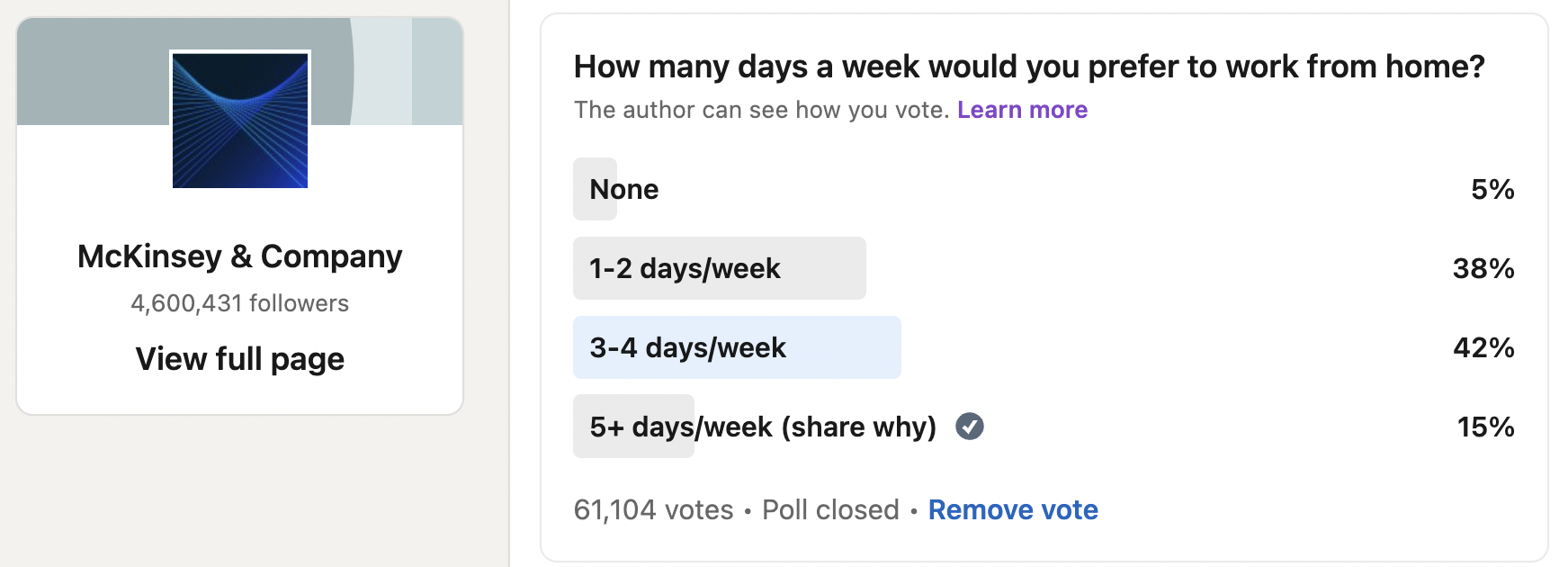In a recent survey of HR professionals from 700+ organizations, 80% of respondents whose organizations have adopted a hybrid work model say it’s exacerbating exhaustion and burnout. Here are the top three future of work mistakes I see organizations make—and what you should do instead:
Mistake # 1: The future of work plan isn’t mission-driven
Most organizations seem to be making decisions about when, where, and how employees work based in-part on stated preference surveys (see sample McKinsey survey below). While it’s great to take employee feedback into account, there is no single solution that will work for every individual and team. So, decisions that rely on majority rule or manager preferences are bound to leave a large percentage of your team feeling disengaged.

What to do instead: Put your mission at the center of your future of work plans. If your organization produces physical goods, then most of your people will need to work from a physical location. And where your frontline staff work, their leaders should also work.*
If your organization produces a service or digital good, delegate future of work decisions to teams. You can provide an agreement template that outlines the types of norms and practices each team should discuss and adopt to set teams up for success.
*Mistake #2: Leaders aren’t modeling the way
A recent Pulse Report from Slack shows a troubling disconnect between executives and employees. Although it's executives who say they want to return to the office, it’s their employees who are being forced to show-up. And non-executive employee work-life balance and engagement have dropped significantly as a result of inflexibility.
It gets worse. The report further shows that many leaders aren’t taking action to address the challenges faced by their employees. Of course, they’d need to know there’s an issue before they could respond—which is hard to do if they're not present with their people.
What to do instead: Model the change you expect from your team. When you lead the way, you build buy-in from your team to follow. And, when you’re in-it with them, you build empathy for their experience and hear first-hand how change is going. These insights will enable you to quickly identify strengths to scale and challenges to course correct.
Mistake #3: Organizations aren’t addressing root issues
Most people don’t want to work from home because they value staying home 24/7 or only want to interact with their co-workers through a computer screen. They need to work from home because childcare is expensive or unavailable, long commutes eat-up valuable personal time, and open office environments kill productivity. Leaders are going to be hard-pressed to bring employees back to offices—and maintain engagement—until they address these root issues.
What to do instead: If you’d like to bring your people back to the office, you need to understand both their motivations for returning to work and staying at home. Then, you need to find creative ways to address those stay-at-home motivators.
